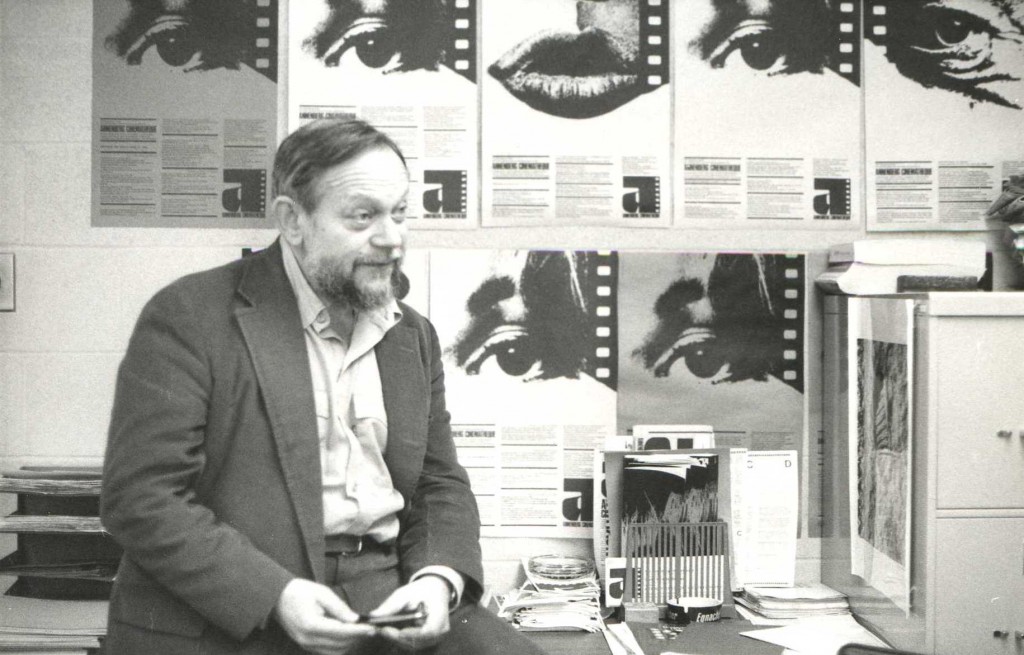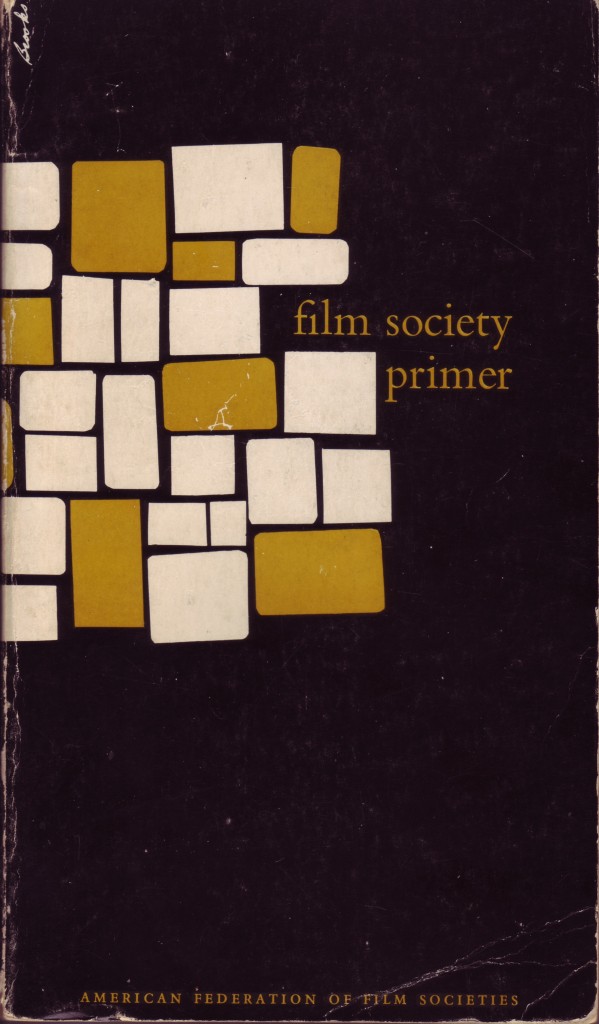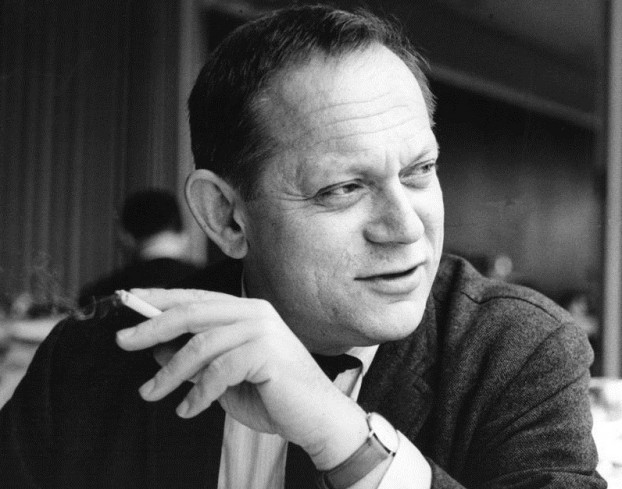Last week’s news of Amos Vogel’s death, at 91, brought the expected—and deserved—tributes for the enormous influence of two ventures that he co-founded: Cinema 16, the New York-based film society that ran from 1947 to 1963, and the New York Film Festival, which Vogel programmed from 1963 to 1968. (In these ventures, equal credit must go, respectively, to Amos’s partner Marcia Vogel and the critic/curator Richard Roud, both deceased.) The lineup of filmmakers whose work Vogel introduced to New York audiences is certainly imposing: Polanski, Ozu, Brakhage, Anger, Cassavetes, Bresson, Resnais, Rivette, Varda, Naruse. The list could go on.

With respect to Cinema 16, the Vogels’ feat is nearly incomprehensible today. Gravitating towards a membership-driven screening series after encountering absurd troubles with the New York censors (who proscribed, among other films, Alexander Hammid’s The Private Life of a Cat from public viewing), Cinema 16 eventually counted over 5,000 individual subscriptions. Such a cultural paradigm is as distant as the epithets once marshaled to describe it: aspiring eggheads, Masscult vs. Midcult, art house.
Operating out of a 1,600-seat high school venue (the Central Needle Trades Auditorium) that would often be filled to capacity for both the early and late performance, Cinema 16 carved out a public profile for avant-garde cinema that it has scarcely enjoyed since.
Of course, Cinema 16 was not exclusively an avant-garde series; to the contrary, Vogel always emphasized that such a programming strategy would be suicidal and counter-productive, for Cinema 16 and for the films themselves. Such a position led inevitably, more or less, to the creation of the New American Cinema Group, the Film-Maker’s Coop, and eventually Anthology Film Archives—institutions formed to address this subject without apology. Stan Brakhage described the conundrum to Scott MacDonald in a 1996 interview:
Amos was the one hope. He had an audience of five thousand people to whom he would show works that my friends and I regarded as art. That was wonderful, but he showed the films we admired in a mix with scandal movies and documentaries of various shocking subjects. In a way, Cinema 16 programs often didn’t look all that different to me from the newsreels I had attended as a child during the Second World War.
Amos’s main concern and consideration was to show things that you couldn’t see elsewhere, and that was what attracted his audiences. They felt very special; they were seeing things that weren’t allowed into the local neighborhood theaters and later that you couldn’t see on television: censored things, sexual subject matter, dog heads kept alive on tables in Russian laboratories—a mix into which was stirred some of the great American independent films.
This characteristic mix was present from the very first Cinema 16 program in November 1947: Sidney Peterson and James Broughton’s surrealist short The Potted Psalm, a filmed record of a Martha Graham performance of Lamentation, Douglas Crockwell abstract animation Glen Falls Sequence, the anti-Bomb cartoon Boundary Lines, and the evolution documentary Monkey to Man.
So there’s justice in Brakhage’s pronouncement, but also a certain harshness. More than a midway cinema barker, Vogel expounded on his programming strategies with uncommon candor in a series of articles that aimed to galvanize non-theatrical exhibition around the country. It’s a virtue that separates Vogel from most all of his successors. These days, programming and curatorial strategies and museum practices are dissected in graduate-level seminars, but the popularizing impulse is almost entirely absent.
 The most successful programmer in America, with ample work on his plate, took the time to explain the minutiae of the job to a general audience: stirring up a following with the help of local store-keepers, securing free legal advice by appointing a lawyer to your advisory board, collecting film catalogs from a welter of similar-sounding organizations (The Educational Film Guide, Educational Screen, Educators Progress Service, etc.), procuring a ‘fifty-cent buzzer-and-code system’ for sending messages to the make-shift projection booth. About the latter, Vogel added, with characteristic humor and fleet social portraiture, “Ask the projectionist to move around quietly and, if he has brought his family to watch him, to wait to discuss personal matters until after the show.” Who knew that every projectionist in New York had a Yiddische Momme?
The most successful programmer in America, with ample work on his plate, took the time to explain the minutiae of the job to a general audience: stirring up a following with the help of local store-keepers, securing free legal advice by appointing a lawyer to your advisory board, collecting film catalogs from a welter of similar-sounding organizations (The Educational Film Guide, Educational Screen, Educators Progress Service, etc.), procuring a ‘fifty-cent buzzer-and-code system’ for sending messages to the make-shift projection booth. About the latter, Vogel added, with characteristic humor and fleet social portraiture, “Ask the projectionist to move around quietly and, if he has brought his family to watch him, to wait to discuss personal matters until after the show.” Who knew that every projectionist in New York had a Yiddische Momme?
The Vogel message was essentially democratic. “[W]ith ingenuity, perseverance, knowledge of films, and luck,” he wrote “anyone can operate a film society.” Indeed, for a brief moment, anyone did. It helped that mass-circulation publications like the Saturday Review of Literature printed a regular 16mm column and newer, niche rags like Film Culture devoted space to film society matters. The post-war rise of the film society would ultimately produce a circuit of thousands of such clubs in churches, community lodges, libraries, union halls, campsites, and especially, colleges. (Cecile Starr’s 1956 chapbook Film Society Primer, to which Vogel contributed an article, is an essential and undervalued document of this moment in history, filled with overwhelmingly earnest accounts of successful ventures in towns great and small.)
Of course, the proliferation of film societies was something in which Cinema 16 had no small interest. Beginning with a brief note in a 1948 program notifying peers that select Cinema 16 selections were available for showing at your local film society, the non-profit group ultimately released a series of distribution catalogs, the final one containing some 240 titles for rent.
Vogel intended Cinema 16 as a model for like-minded film societies, perhaps too narrowly. “If you haven’t the feel for balanced programs,” Vogel counseled, “you will fail. The science of programming cannot be taught; it requires psychological insight into the likes of other people and continuing contact with your specific audience to permit you to correct yourself as you go along.”
Programming may not have been teachable full-stop, but Vogel certainly had some prescriptions: mix up features and shorts, with the expectation the latter will often be more free-wheeling and genuinely artistic; include scientific films, art films, educational films, experimental films, old films, new films, telefilms; resist censorship and encourage any easily-offended members to absent themselves; vary the tone of programs, with cartoons often appropriate before more serious social-problem fare. On occasion, Vogel’s practical advice could shade into the cavalier and paternalistic:
If films shown by the film society are entertaining, so much the better; but entertainment value cannot be the sole criterion for film society programming, nor can audience approval or disapproval. Film societies must remain at least one step ahead of their audiences and must not permit themselves to be pulled down to the level of the lowest common denominator in the audience—a very easy, common, and dangerous occurrence in mass media. (We could take to heart the remark made by Frederick Stock, director of the Chicago Symphony Orchestra, who after introducing Brahms to Chicago audiences for the first time said: “They do not like Brahms … I shall play him again.”)
Ironically, as Cinema 16 became the de facto gate-keeper of the independent cinema world, Vogel himself came to resemble a Hollywood mogul, warning filmmakers that their films were too long, pushing to cut out obscure sequences, withholding some films from exhibition until more palatable versions were offered. (It was precisely this set of circumstances that led Brakhage, Jonas Mekas, and others to break away.)
One can, of course, admire Vogel’s achievements without subscribing to every detail of his doctrine. The network that Vogel sought to seed does not exist anymore in any easily recognized form. Campus film societies these days are rarely student-run and student-programmed. The social spaces that gave over a dingy hall to the local film club one Thursday a month have themselves largely vanished. Commercial repertory houses are under threat from digital projection. Cinematheques continue, but with nothing like the public profile that Vogel envisioned.
Perhaps the closest equivalents in recent times were the MoveOn.org-sponsored house parties of the Bush years, which brought neighbors together to see the agitprop documentaries of Robert Greenwald. Sadly, the cultural comforts of the Obama Age have squelched much of the energy behind these kinds of initiatives.
More’s the pity. Much of Vogel’s advice remains surprisingly current and sharp. We would still benefit from its wide enactment.

